- 02 9712 1736
- [email protected]
- 212 Great North Road, Five Dock, NSW 2046
- Open 7 days a week
Are you suffering from knee pain? Are you seeking answers for the cause of your knee pain and asking the question, ‘knee pain how do i best fix it,’? If you are this article is for you. Knee pain can bring your life’s momentum to a staggering halt. We have treated many patient’s who with one unfortunate movement have had their life tuned upside down with knee pain. Identifying the cause of your knee injury is the first step towards effective treatment. We’ll navigate you through some quick-relief measures, lifestyle adaptations, and when it’s time to consult a professional. All without overwhelming you with jargon or needless complexity. Your journey to alleviating knee pain starts here, step by confident step.
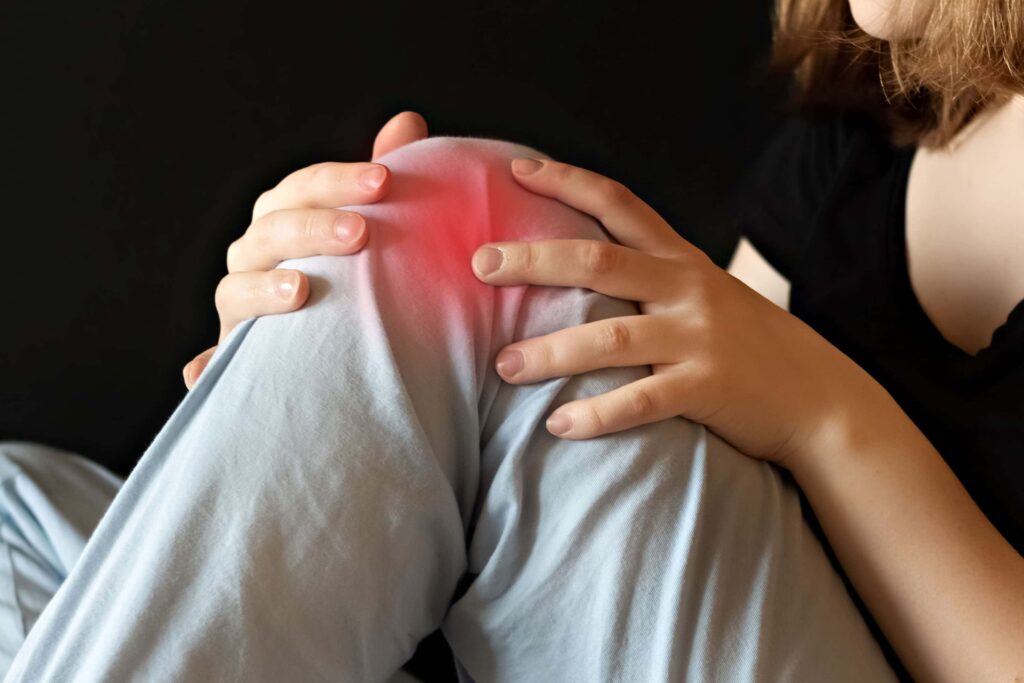
Knee pain is a deliberating and annoying injury, often striking when least expected. It springs from numerous of anatomical sources from both within the knee and external to the knee. Common causes of knee injuries include:
Your knee is consider a stable joint in your body, because its primary actions involve bending and straightening of your leg, with little other movement available. For this reason when you experience an unexpected twist or sudden sideway forces on your knee, such as in contact sport, you can be creating damage of your knee joint. Knee pain, a common form of joint pain, and may start subtly, such as a mild discomfort after a running, but it can quickly escalate, turning what would have been a simple movement into a painful activity.
Chronic discomfort in your knee can be from a variety of reasons. Often osteoarthritis or a cartilage tear (meniscus injury) are a common cause of persistent knee pain. However, patellofemoral pain syndrome (knee cap pain) could also be a potential source of your agony. However don’t worry because the key to unlocking relief lies in pinpointing the exact cause of your knee pain. In the amazing modern world we live in diagnosing the cause of your knee pain is only a few steps away. With the right diagnosis the appropriate treatment can quickly begin, returning you back to doing what you love, not limited by pain.
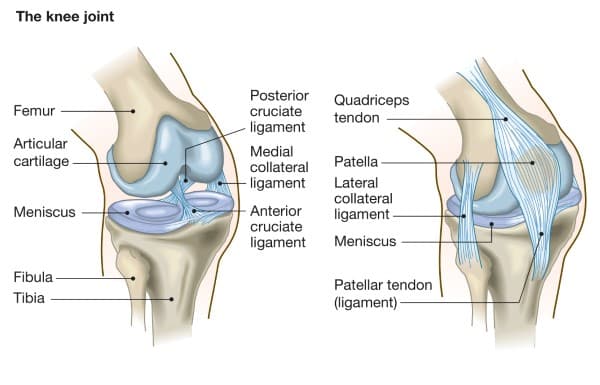
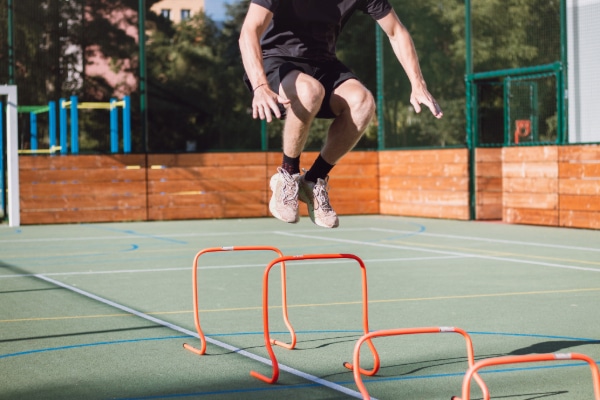
When knee pain makes an unwelcome appearance, swift action is paramount. The PRICE method – Protection, Rest, Ice, Compression, Elevation – stands as a well tested form of immediate care. In particular it is a tried-and-true formula for sprains and strains that effect all your joints.
Picture this: you’ve taken a tumble, and your knee protests with a sharp painful complaint. Without hesitation, you recall the steps that can prevent further damage (protection) and foster a quick recovery, ice, rest, compress and elevate.

Imagine your knee as a treasure that needs safeguarding. Immobilizing it with braces, taping, or splints is akin to placing a protective barrier around the knee joint, ensuring that no further harm happens to your knee. While you embark on the healing process. Knee braces serve as loyal servant, maintaining proper alignment and offering support while still allowing you to move within a careful protected movement range. A key to quick recover is movement.
In the event of a milder injury, taping or splinting can be your protection, limiting certain movement to protect your knee from the dangers of further injury.
Rest and elevation go hand in hand like trusted companions on the journey to recovery. Firstly, elevating your injured knee is like pouring water downhill, directing the flow of blood and inflammation back to the upper body, away from your knee. This is an important step in healing. It allows the body to get on with repairing damaged tissue. Because by removing the swelling from the knee joint, you are allowing the bodies natural building processes to occur. By keeping the knee aloft above the heart’s level, you’re charting a course for the swelling to be reduced and healing to be accelerated.
Rest, the silent partner in this duo, stands watch, ensuring that your knee is relieved of its duties while healing takes centre stage. Patients often don’t rest enough when injured and this slows down your healing.
A cold compress or ice pack is your ally in the initial battle against pain and swelling. In the immediate period after an injury, applying a cold pack for 15-20 minutes every hour can greatly reduce pain and inflammation. The first two symptoms you will experience. This chilly companion soothes the injured tissues, by telling the body to stop swelling and offering a respite from the discomfort and pain that follows all physical injury.
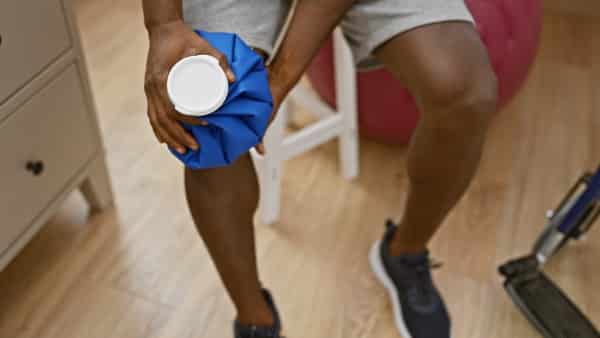
When knee pain becomes an unwanted long-term guest for you, a comprehensive strategy is needed in order to return you to the life you love. Chronic knee pain, can be stubborn as it creates both physical and neurological changes. This pain requires a multi-faceted approach that may include lifestyle changes, physical therapy, or even nerve stimulation.
Below are the tools that can help reshape your day-to-day life, transforming discomfort and pain into a distant memory.
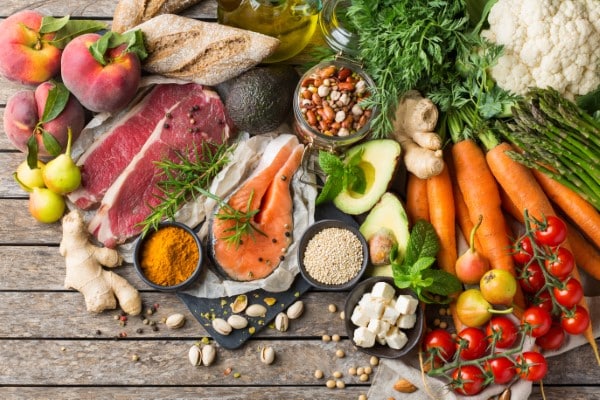
Let’s talk about weight management. It’s not just about the numbers on the scale, but how they affect your knees. Excess weight asks more of your joints, leading to a general increase in inflammation and pain. By shedding unnecessary weight, you lighten the load your knees must carry, allowing them to move with newfound ease.
A balanced diet, such as the Mediterranean-style one rich in fresh produce, can be your roadmap to a healthy weight and less inflamed, happier knees. Contact the Wellbean Nutritionist for some expert nutritional advice.
Physical therapy is like a repair shop and gym all in one, where you train your knees to be stronger and more flexible. The first step in physical therapy is to improve your knee mobility. After this strengthening exercises will build your leg and hip strength. This acts as a wonderful support for your knee joint, by encouraging your muscles to carry the load not your joints. This help in protecting you against future knee joint pain. A physical therapist can introduce you to stretches and exercises tailored to your body, perfect for managing chronic knee pain from arthritis or recovering from an injury.
For those who live an active lifestyle or engage in sports, physical therapy can correct movement patterns and ensure that every leap and stride is done with proper technique, safeguarding your knees from the pain that could follow.
Sometimes, despite our best efforts, knee pain persists, refusing to response to physical therapye. In these cases, advanced treatment options may come into play. When knee pain severely disrupts your life and other treatments have been exhausted, it may be time to consider surgical procedures or injections.
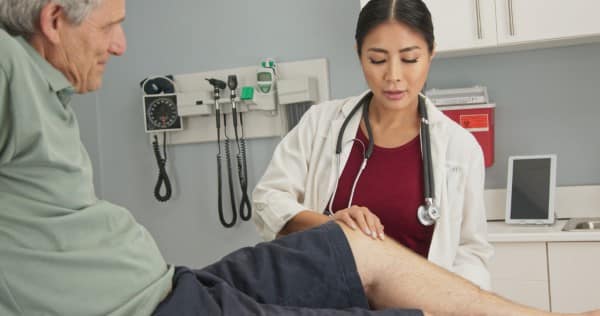
Over-the-counter medications are often part of the first line of defence in the fight against knee pain. Some common options include:
These medications can be a temporary solution, bridging the gap until a more permanent fix can be found.
When the damage is significant or the structure of the knee has been compromised, knee surgery may be the required path to have you back to your best. Procedures like arthroscopy, osteotomy, and meniscus repairs are considered when the pain is debilitating and other treatments options are not relieving your pain.
In severe cases, such as from osteo or rheumatoid arthritis, a total knee replacement could be the key to regaining a pain-free existence and alleviating any knee arthritis pain. Although it’s important to remember that artificial joints may require future replacement. It is always important to find a good surgeon who provides a balanced approach to your care.
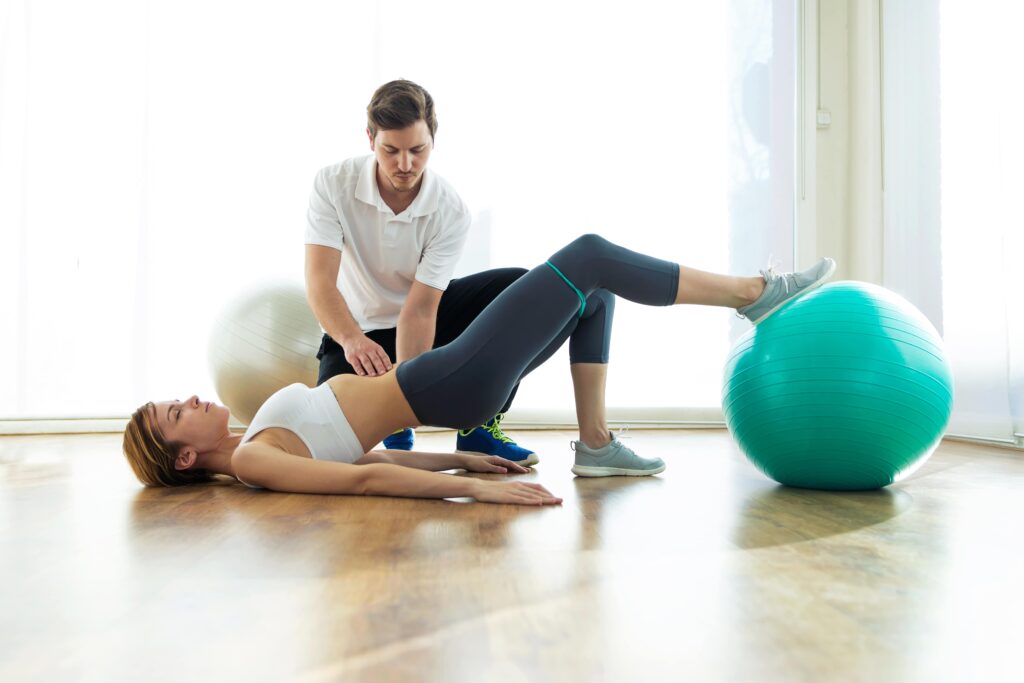
Prevention is better than a cure, especially when it comes to knee pain. Engaging in exercises specifically designed to strengthen and support your knee joint can help you sidestep future pain. Maintaining your health through out your life is known as your health span.
Strengthening routines for your knee, target your quadriceps, hamstring, calves and gluteal muscles. Of particularly importance are the gluteal and quadricep muscles around the knee, as these provide a shield against injury. The quadriceps and hamstrings are especially important, acting as the main support for the knee joint.
Exercises like leg extensions, bridging, straight leg raises, hamstring curls and half squats can reinforce the strength of these muscles without overburdening the knee. If you are beginning from a low base of physical fitness, cycling is a great way to build strength in the knee muscles without placing stress on your knee joint.
Flexibility exercises to build your knee mobility are the key to optimizing your strengthening routine’s. Regular stretching maintains knee joint mobility by encouraging your muscles to be as loose as possible. This mobility helps to prevent stiffness in your joints, that can lead to pain. Lower leg calf stretches, along with quadriceps and hamstring stretches, are important for ensuring that all muscles involved in knee movement are limber and functioning at their best.
Sometimes, the best remedies are found within the comfort of your own home. Simple, everyday methods can be surprisingly effective in helping to prevent and relieve knee pain, caused by various factors, and ultimately ease knee discomfort.
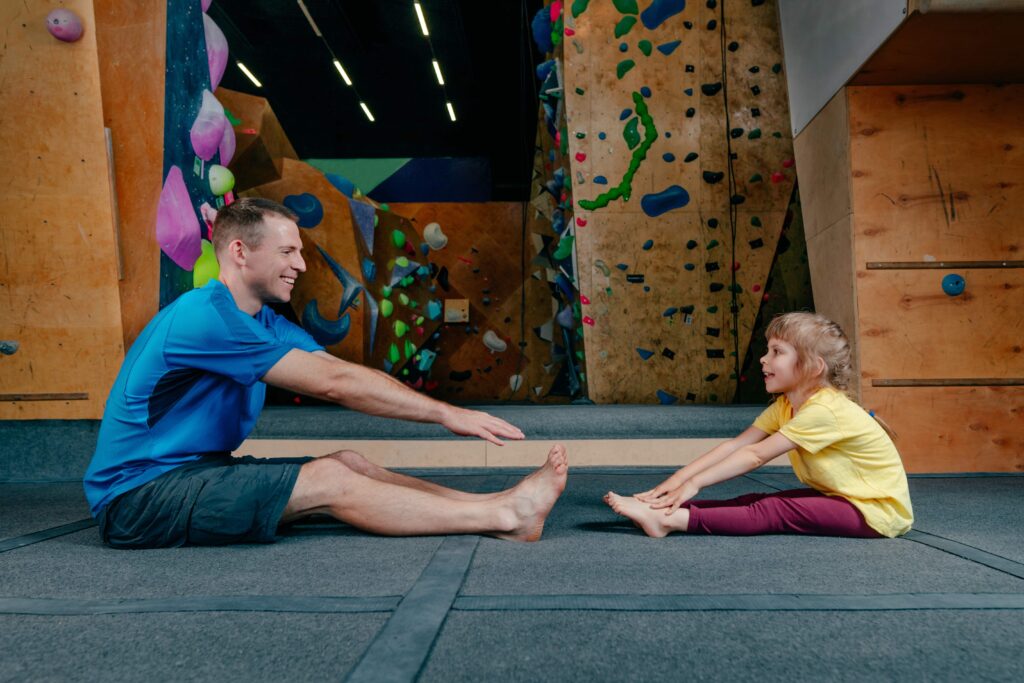
Using heat therapy is a great and simple way to provide relief for your sore knees. Heat therapy can improve mobility, increase circulation and reduce swelling, all offering comfort and support to your knee’s during the recovery process.
However remember it’s important to test the temperature of any heat therapy before application. For example before applying a hot water bottle, to avoid any burns, especially among those with sensitive skin, wrap the hot water bottle in a small towel to avoid direct skin contact.
Dietary adjustments can also play a role in managing knee pain. What you eat not only plays a part in weight management it is also important for reducing body inflammation. Here are some anti-inflammatory foods and essential nutrients that can support joint health and alleviate pain:
For the best nutritional advice and for nutritional advice tailor to you contact The Wellbeing Nutritionist.
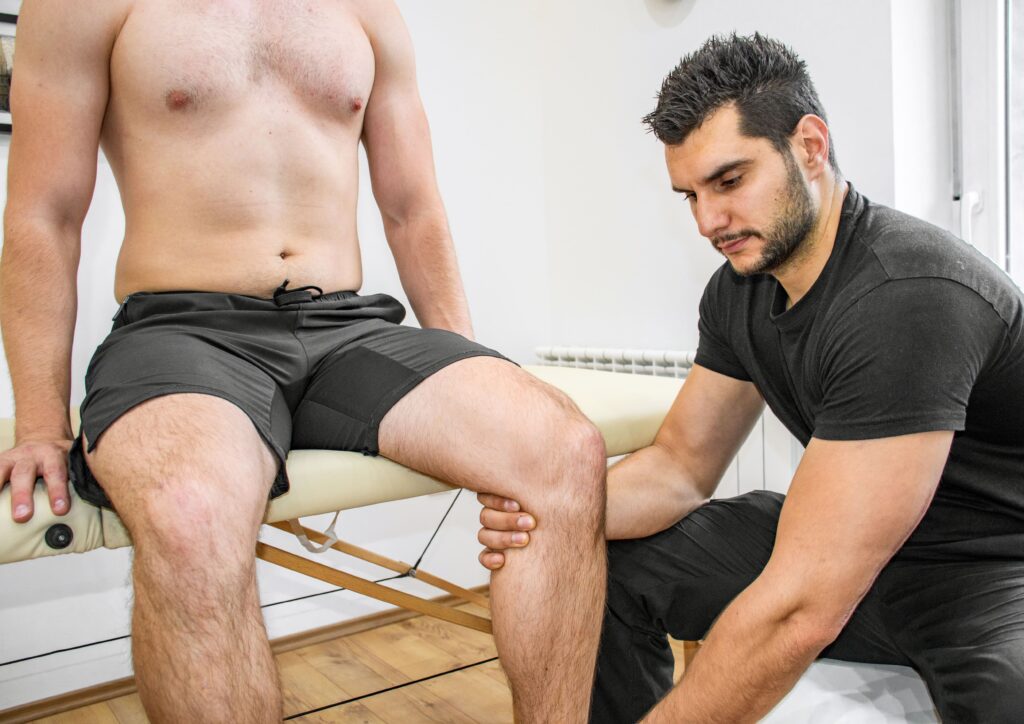
There comes a time when home remedies and self-care are not enough, and professional medical care is necessary. If your knee pain is severe, an accompanied by symptoms such as, loss of movement, locking or giving sensations or if your knee pain persists beyond a few days of home treatment, it’s time to consult a healthcare provider. Your local chiro or physio will be able to provide you with advice and the correct care to resolve your knee symptoms. Remember pain is not the only symptom. Stiffness in your knee is the first sign to seek out professional care.
Recognizing serious symptoms is crucial in determining when to escalate to medical attention. Severe pain, knee instability, and visible deformities are clear indicators that professional care is required. Additionally, if your knee exhibits signs of infection such as redness, heat, or fever, or if it’s accompanied by other symptoms like calf pain or changes in skin coloration, it’s imperative to seek help immediately.
Upon seeking medical care, healthcare professionals may suggest a variety of diagnostic tests to uncover the root cause of your knee pain. An examination backed by imaging tests such as X-rays or MRI can provide valuable insights into the state of your knee’s structure and function. Your local health care professional can guide you on which imaging is best for you.

We’ve dived into the landscape of knee pain, uncovering its potential origins, immediate care strategies, long-term management plans, preventative exercises, and home remedies. Remember, whether it’s a sudden injury or a chronic condition, understanding the cause and exploring appropriate treatments is essential. Let this be your guide to a more active, pain-free life, where every step is taken with confidence and comfort.
The fastest way to relieve knee pain is to immediately follow self-care measures such as rest, applying ice, compression, and elevation. These can help reduce pain, inflammation, and further damage to the knee. It is also important to seek professional help to ensure an accurate diagnosis and treatment plan for your knee pain.
The most common causes of knee pain include patellofemoral pain syndrome from increased activity, injuries like ligament and muscle strains, arthritis, infections, bone diseases, and cartilage wear and tear over time. Be mindful of these factors if you experience knee pain.
You should use the PRICE method for knee pain within the first 24 to 48 hours after injury, particularly for knee inflammation and strains. It can help reduce swelling and promote healing.
Yes, maintaining a healthy weight and including anti-inflammatory foods in your diet can help reduce knee pain and manage conditions such as arthritis and meniscus damage. A balanced diet can have a positive impact on knee health.
Yes, performing strengthening exercises for the quadriceps and hamstrings, combined with a flexibility routines, such as quadricep, hamstring and calf stretches, can help improve knee stability and function to prevent pain.
Forest Lodge, Annandale, Glebe, Leichhardt, Balmain, Haberfield, Canada Bay, Rozelle, Rodd Point, Wareemba, Stanmore, Petersham, Lilyfield, Hunters Hill, Enfield, Cabarita, Mortlake, Rhodes, Burwood Heights, Birchgrove, Gladesville, Huntleys Point, Abbotsford, Ashfield, Croydon Park, Croydon, Chiswick, Russell Lea, Burwood, Strathfield, Concord, Drummoyne, North Strathfield, Liberty Grove, Dulwich Hill, Lewisham, Camperdown, Ashbury, Homebush, Homebush West, Woolwich, Henley, Summer Hill, Sydney Olympic Park
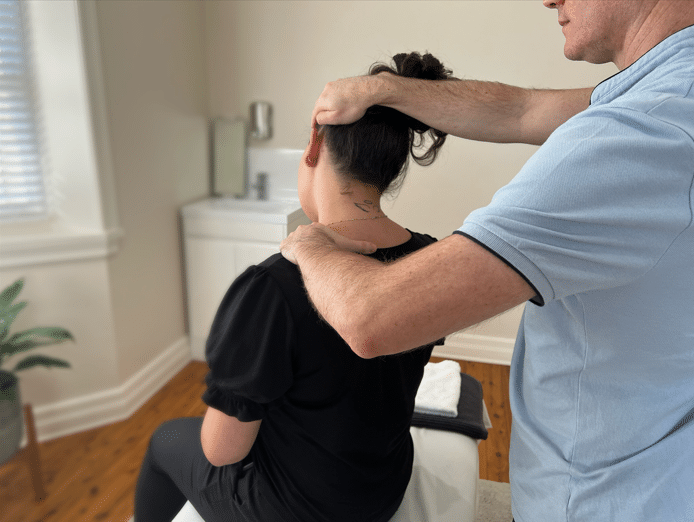

About
Five Dock Osteopathic & Chiropractic is located in Canada Bay, in Sydney’s Inner West. Servicing suburbs including Burwood, Croydon, Drummoyne, Five Dock, Haberfield, Concord, Abbotsford, Chiswick, Leichhardt, Wareemba, Russell Lea, Summer Hill, Strathfield.
Clinic hours
Monday, Tuesday, Thursday 7AM – 7PM
Wednesday, Friday 7AM – 6PM
Saturday 7AM – 2PM
Sunday 8AM – 2PM
Contact details